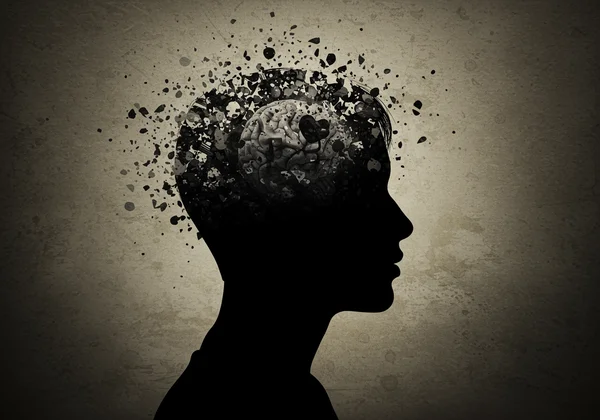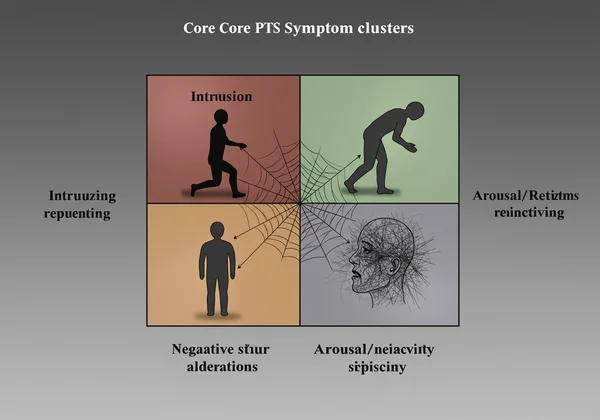What is PTSD? Symptoms, Causes, & Your Recovery Guide
Introduction: Unpacking Post-Traumatic Stress Disorder
Living through a traumatic event can reshape your world in ways that are difficult to articulate. The echoes of that experience can linger, affecting your thoughts, feelings, and daily life. If you find yourself wrestling with persistent, distressing memories, you might be asking: what is PTSD? This question is a crucial first step toward understanding and healing. Many people wonder, Do I have PTSD test?, seeking clarity in the confusion that follows trauma. This guide is here to provide that clarity, walking you through the complexities of Post-Traumatic Stress Disorder with empathy and expert insight. Understanding your experience is the foundation of empowerment, and taking a confidential PTSD test can be a valuable starting point on your journey.
Understanding Post-Traumatic Stress Disorder (PTSD)
Post-Traumatic Stress Disorder is more than just feeling sad or stressed after a difficult event; it is a recognized mental health condition that can develop after experiencing or witnessing a life-threatening or deeply distressing event. It can affect anyone, regardless of age, gender, or background. Understanding its formal definition is key to recognizing its impact.
What is Post-Traumatic Stress Disorder?
At its core, PTSD is a disorder where the mind and body remain in a state of high alert long after the danger has passed. The brain's natural "fight or flight" response becomes dysregulated, causing intense emotional and physical reactions to triggers that remind you of the trauma. According to diagnostic standards like the DSM-5, these symptoms must persist for more than a month and significantly interfere with your ability to function in daily life, whether at work, school, or in your relationships. It's a condition rooted in survival instincts that haven't yet learned the threat is over.

A Brief History of PTSD: From Shell Shock to Modern Diagnosis
The concept of trauma-related stress isn't new. It has been documented under various names throughout history, from "shell shock" in World War I soldiers to "combat fatigue" in World War II. These early terms captured the visible exhaustion and anxiety seen in those returning from war. However, it wasn't until 1980 that Post-Traumatic Stress Disorder was officially recognized as a distinct diagnosis. This modern understanding acknowledges that trauma is not limited to the battlefield and can stem from any overwhelming experience, validating the struggles of millions and paving the way for effective, evidence-based treatments.
Recognizing Common PTSD Symptoms
The signs of PTSD can be complex and are often grouped into four main categories. Recognizing them is the first step toward getting help. These symptoms can emerge shortly after a traumatic event or, in some cases, months or even years later. Many people find a Check Your Symptoms tool helpful in organizing their experiences.
The Four Core Symptom Clusters
Based on the PCL-5 standard, which our test is based on, symptoms are generally categorized into these four clusters:
-
Intrusion: This involves re-experiencing the traumatic event against your will. It can manifest as intrusive memories, vivid flashbacks where you feel like you are reliving the event, or distressing nightmares.
-
Avoidance: You might go to great lengths to avoid anything that reminds you of the trauma. This can include avoiding people, places, conversations, or activities. You may also try to avoid thinking or feeling anything related to the event.
-
Negative Alterations in Cognition and Mood: This cluster includes persistent negative thoughts and feelings. You might experience distorted beliefs about yourself or the world (e.g., "I am bad," "The world is completely dangerous"), feel detached from others, or lose interest in activities you once enjoyed. Emotional numbness is common here.
-
Alterations in Arousal and Reactivity: This involves feeling constantly on edge. Symptoms include irritability, angry outbursts, reckless behavior, being easily startled, and having difficulty concentrating or sleeping. This state of hypervigilance can be utterly exhausting.

Beyond the Basics: Other Signs You Might Be Experiencing
Beyond the core clusters, PTSD can manifest in other ways. You might experience physical symptoms like chronic pain, headaches, or digestive issues. Relationships can become strained due to emotional withdrawal or irritability. Some people turn to substance use as a way to cope with the overwhelming feelings. Trust can become incredibly difficult, making it hard to form or maintain close bonds.
Do I Have PTSD or Anxiety? Understanding the Differences
It’s common to confuse PTSD with general anxiety, as they share symptoms like hypervigilance and sleep problems. The key difference lies in the root cause. While anxiety can be generalized or tied to various life stressors, PTSD is directly linked to a specific traumatic event or a series of events. The intrusive memories, flashbacks, and trauma-specific avoidance are hallmarks of PTSD that are not central to most anxiety disorders. An Online Self-Assessment can help you begin to differentiate these experiences.
Exploring the Causes & Risk Factors of PTSD
While a traumatic event is the trigger for PTSD, not everyone who experiences trauma will develop the condition. A combination of the event's nature and individual factors contributes to who is most at risk.
What Types of Trauma Can Lead to PTSD?
PTSD can result from a wide range of experiences. There is no hierarchy of trauma; what matters is the individual's subjective experience of terror, helplessness, or horror. Common causes include:
-
Combat exposure or military service
-
Physical or sexual assault
-
Childhood abuse or neglect
-
Serious accidents (e.g., car crashes)
-
Natural disasters
-
Witnessing violence or death
-
A sudden, unexpected loss of a loved one

Why Do Some People Get PTSD and Others Don't?
Several factors influence a person's vulnerability to developing PTSD. These can include the severity and duration of the trauma, a history of prior trauma, a lack of social support after the event, and pre-existing mental health conditions like anxiety or depression. Conversely, a strong support system, positive coping strategies, and seeking help early can build resilience and reduce the likelihood of developing long-term symptoms.
Differentiating PTSD and Complex PTSD (cPTSD)
For some, trauma isn't a single event but a prolonged, repeated experience. This can lead to a related but distinct condition known as Complex PTSD (cPTSD), a term gaining recognition for its unique challenges. Understanding this difference is vital for finding the right support.
What Makes cPTSD Different?
While PTSD often stems from a single traumatic incident, cPTSD typically arises from prolonged, relational trauma where escape is difficult or impossible. This includes experiences like long-term childhood abuse, domestic violence, or being a prisoner of war. The core difference is the element of being trapped in the traumatic situation. For those wondering about this, a Complex PTSD Test can provide initial insights.
Impact of Prolonged Trauma: cPTSD Symptoms Explained
In addition to the standard PTSD symptoms, individuals with cPTSD often face deeper challenges related to their sense of self and their ability to connect with others. These identity disturbances may include:
- Difficulties with emotional regulation: Experiencing intense anger, sadness, or suicidal thoughts.
- Disturbances in self-perception: Feeling helpless, worthless, or carrying a deep sense of shame and guilt.
- Relationship difficulties: Struggling with trust, feeling isolated, or repeatedly entering unhealthy relationships.
- Loss of a system of meanings: This can involve losing one's faith or developing a sense of hopelessness about the world.
Your Path to Recovery: Treatment & Support
Receiving a potential PTSD diagnosis can feel overwhelming, but it is crucial to remember that recovery is possible. With the right treatment and support, you can learn to manage your symptoms, process the trauma, and reclaim your life.
Professional Treatment Options (Therapy & Medication)
Therapy is the cornerstone of PTSD treatment. Evidence-based approaches like Trauma-Focused Cognitive Behavioral Therapy (TF-CBT) and Eye Movement Desensitization and Reprocessing (EMDR) have been proven highly effective. These therapies help you process traumatic memories in a safe environment and change negative thought patterns. In some cases, medication like SSRIs may be prescribed to help manage severe symptoms of anxiety or depression.
Coping Strategies for Daily Management
Alongside professional treatment, developing personal coping skills is essential. Grounding techniques can help pull you back to the present moment during a flashback or when feeling overwhelmed. This can be as simple as focusing on the sensation of your feet on the floor or holding a piece of ice. Mindfulness, gentle exercise, and maintaining a consistent routine can also provide a sense of stability and control.
Finding Support: Resources for You and Your Loved Ones
You don't have to go through this alone. Connecting with support groups, either online or in person, can reduce feelings of isolation by sharing experiences with others who understand. Educating family and friends about PTSD can also help them become a part of your support system. Acknowledging your struggles by taking the first step, such as using a Free PTSD Test, can open the door to these vital resources.

Empowering Your Healing Journey: What's Next?
You've taken a significant step today in understanding what is PTSD. This knowledge goes beyond definitions; it's about validating your experiences and recognizing that your reactions are a normal response to abnormal events. From identifying the four core symptom clusters to learning about effective treatments, knowledge is the first tool for empowerment. Healing is not about erasing the past but about integrating it into your life in a way that no longer controls you.
If you recognize parts of your own story in this guide, know that clarity and help are within reach. The journey to recovery begins with a single, courageous step. A great place to start is with a confidential, pressure-free PTSD test.
Take Our Free PTSD Test on our homepage to gain immediate, private insights into your symptoms. Let it be the first step on your path toward healing and hope.
Frequently Asked Questions About PTSD
How accurate are online PTSD tests?
Online PTSD tests, especially those based on recognized clinical tools like the PCL-5, can be highly accurate as a preliminary screening tool. They are designed to help you identify symptoms consistent with PTSD. However, they are not a substitute for a formal diagnosis from a qualified mental health professional. Consider the results from an Online PTSD Test as a starting point for a conversation with a doctor or therapist.
Can PTSD go away, or is it a lifelong condition?
With effective treatment, many people experience a significant reduction in PTSD symptoms and can live full, productive lives. For some, symptoms may lessen to the point they no longer meet the diagnostic criteria. For others, it may be a lifelong condition that requires ongoing management. The key takeaway is that recovery is possible, and symptoms can be successfully managed.
What happens if PTSD is left untreated?
If left untreated, PTSD symptoms can worsen over time and severely impact all areas of life. This can lead to chronic health problems, substance abuse, relationship breakdowns, and an increased risk of suicide. Seeking help is not a sign of weakness; it is a courageous act of self-preservation and the most effective way to prevent long-term complications.
How do I know if I have trauma, not just stress?
Stress is a normal reaction to life's pressures, while trauma is a response to a deeply distressing or life-threatening event that overwhelms your ability to cope. The defining feature of trauma is a sense of intense fear, helplessness, or horror. If memories of a specific event continue to cause significant distress long after it's over, it's more likely related to trauma than everyday stress.
What should I do after taking a PTSD test?
After taking a PTSD test, take a moment to reflect on your results. If they indicate you may be experiencing symptoms of PTSD, the most important next step is to share these findings with a trusted healthcare provider, such as a doctor, therapist, or counselor. The results from a Confidential Assessment can provide a clear, structured way to start that conversation and ensure you get the professional support you deserve.